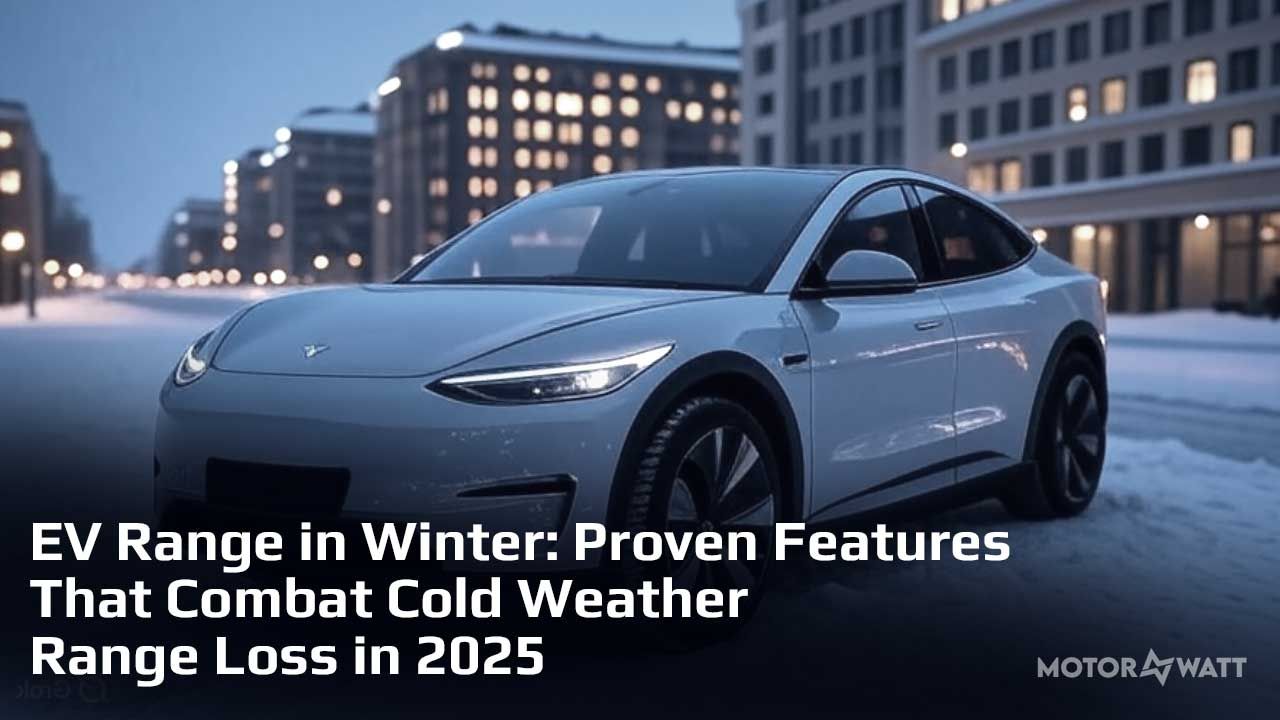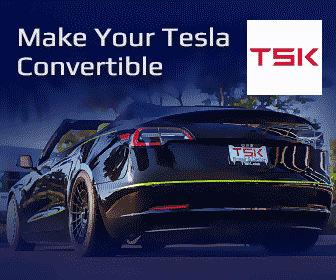EV Range in Winter: Proven Features That Combat Cold Weather Range Loss in 2025
Share this article in Social Media:

How to Maximize EV Range in Winter: Features in 2025
EV range in winter performance varies significantly by model and features. Heat pumps reduce cold weather range loss by up to 50% compared to resistive heating. Top performers retain 97% of EPA range at freezing temperatures, while preconditioning can save 15-20% battery power when done while plugged in.
Discover the advanced technologies and strategies that help electric vehicles maintain optimal performance in freezing temperatures
Best Performers
Efficiency Gain
Reduction
Temperature
🔑 Executive Summary
Electric vehicles face significant range challenges in winter, with some models losing up to 40% of their EPA-estimated range in freezing conditions. However, modern EVs equipped with advanced thermal management systems can maintain up to 97% of their range even in sub-zero temperatures.
- Heat pumps are 300% more efficient than traditional resistance heating for cabin warming
- Battery preconditioning can reduce range loss by 50% when used strategically
- Top performers like Hyundai Ioniq 5 and Jaguar I-PACE retain 97% of their range at 32°F (0°C)
- Strategic preconditioning while plugged in preserves battery energy for driving
🛠️ Essential Features That Minimize Winter Range Loss
Modern electric vehicles incorporate sophisticated technologies to combat the challenges of cold weather operation
Heat Pump Technology
Heat pumps are significantly more efficient than traditional electric resistance heaters, particularly in moderately cold temperatures between 15°F and 40°F (-9°C to 4°C). They work by transferring existing heat rather than generating it from scratch, making them up to 300% more efficient than resistive heating systems.
Battery Preconditioning Systems
These systems allow drivers to warm the battery while the EV is plugged in, drawing power from the grid rather than the battery itself. This warms the battery to its optimal operating temperature of 68°F to 86°F (20°C to 30°C), improving efficiency and enabling faster charging speeds.
Active Thermal Management
Sophisticated systems that actively regulate battery temperature to maintain optimal operating range. These systems include both heating in cold weather and cooling in hot weather to maximize efficiency and battery lifespan, typically maintaining temperatures between 68°F and 86°F (20°C to 30°C).
Heated Seats & Steering Wheels
These features are significantly more energy-efficient than using the main cabin heater to warm the entire interior. By utilizing these targeted heating elements, drivers can keep the overall cabin temperature lower while remaining comfortable, conserving battery power and extending range.
All-Wheel Drive Systems
AWD systems improve traction and handling on snowy and icy roads, providing better control and safety in winter conditions. Many top-performing winter EVs come standard with AWD, combining performance with efficiency.
Intelligent Energy Management
Advanced algorithms that optimize energy distribution between propulsion, heating, and other systems based on driving conditions, weather, and user preferences. These systems learn from driving patterns to maximize efficiency.
📊 Winter Range Performance by EV Model
Range Retention at 32°F (0°C) - Top Performers
Temperature Impact on EV Range
🏆 Top EVs for Winter Performance in 2025
These electric vehicles consistently perform well in cold weather testing and offer the best combination of features for winter driving
| Model | Range Retention | Key Features | Starting Price | Winter Rating |
|---|---|---|---|---|
| Hyundai Ioniq 5 | 97% | Heat pump, AWD, preconditioning, ultra-fast charging | $48,500 (£38,800 / €45,200) | ⭐⭐⭐⭐⭐ |
| Jaguar I-PACE | 97% | Standard AWD, heat pump, preconditioning | $71,300 (£57,000 / €66,500) | ⭐⭐⭐⭐⭐ |
| Polestar 2 | 86% | Heat pump, advanced thermal management | $48,400 (£38,700 / €45,100) | ⭐⭐⭐⭐⭐ |
| Chevrolet Silverado EV | 86% | Advanced preconditioning, large battery | $96,500 (£77,200 / €89,900) | ⭐⭐⭐⭐⭐ |
| Audi Q8 e-tron | 80% | Standard heat pump, Quattro AWD | $75,800 (£60,600 / €70,700) | ⭐⭐⭐⭐ |
| Hyundai Kona Electric | 84% | Heat pump, preconditioning, compact efficiency | $33,550 (£26,800 / €31,300) | ⭐⭐⭐⭐ |
"The difference between EVs with and without heat pumps is dramatic in winter conditions. We're seeing nearly 50% better range retention in models equipped with advanced thermal management systems."
— Automotive Testing Institute, 2024
🔄 Mastering EV Preconditioning for Maximum Efficiency
Strategic preconditioning can significantly improve performance, charging speed, and range, especially in cold weather
🔌 Always Precondition While Plugged In
Use grid power instead of battery power for warming. This preserves your driving range and ensures optimal battery temperature without energy loss.
⏰ Schedule Preconditioning
Program your EV to automatically start preconditioning before your departure time. Most EVs allow 30-45 minute preconditioning cycles.
🗺️ Use Navigation for Auto-Preconditioning
Set DC fast charging stations as destinations to automatically precondition the battery during the 20-30 minute drive, optimizing charging speeds.
📱 Remote Preconditioning
Use smartphone apps to remotely start preconditioning when plans change unexpectedly. Start 15-30 minutes before departure in cold weather.
🌡️ Temperature Timing
Colder weather requires longer preconditioning. Allow 45-60 minutes in temperatures below 15°F (-9°C) for optimal results.
⚡ Combine with Charging
Schedule charging to complete just before departure, ensuring the battery is both fully charged and warm when you begin driving.
Preconditioning Efficiency by Temperature
🔋 Battery Longevity and Preconditioning Impact
✅ Good News: Preconditioning Extends Battery Life
Contrary to common concerns, EV battery preconditioning is not detrimental to battery health and actually helps prolong battery lifespan by:
- Minimizing stress in extreme temperatures: Maintains optimal operating range of 68°F-86°F (20°C-30°C)
- Reducing internal resistance: Warm batteries operate more efficiently with less electrochemical stress
- Improving regenerative braking: Warm batteries accept energy more effectively during deceleration
- Optimizing charging cycles: Proper temperature reduces degradation from repeated charge/discharge cycles
Long-term Benefits
Regular preconditioning can extend battery life by 15-20% by reducing stress cycles and maintaining optimal operating conditions. This translates to maintaining 80% battery capacity for 8-10 years instead of 6-8 years.
Charging Optimization
Preconditioned batteries charge 30-50% faster and with less stress on the cells. This reduces heat generation during charging and minimizes degradation from rapid charging cycles.
Efficiency Gains
Optimal battery temperature improves overall efficiency by 10-15%, meaning less energy waste and better range. This efficiency compounds over time, saving money and reducing environmental impact.
🌍 Environmental Impact of EV Batteries
Understanding the complete lifecycle impact of EV batteries and sustainable practices
Raw Material Extraction
Lithium: Brine evaporation is water-intensive, requiring 500,000 gallons (1.9 million liters) per ton of lithium
Cobalt: 70% mined in DRC with environmental and human rights concerns
Nickel & Manganese: Mining can cause soil and water contamination
Manufacturing Impact
Battery production generates 3-5 tons of CO2 per vehicle, but this is offset within 6-18 months of driving compared to gasoline vehicles. Manufacturing in regions with clean energy reduces this impact by 60-80%.
Recycling Solutions
Modern recycling recovers 95% of battery materials, reducing need for new mining. Second-life applications for EV batteries include home energy storage, extending useful life by 10-15 years.
"The environmental impact of EV batteries is front-loaded in production, but the operational benefits and improving recycling technologies make them increasingly sustainable over their lifecycle."
— International Energy Agency, 2024
Frequently Asked Questions
Key Takeaways for Winter EV Success
The future of electric vehicles in winter climates is bright, with modern EVs achieving 97% range retention even in freezing temperatures. By prioritizing models with heat pumps, battery preconditioning, and thermal management systems, drivers can enjoy reliable electric transportation year-round.
Remember: strategic preconditioning while plugged in, utilizing heated seats over cabin heating, and choosing EVs with proven winter performance will maximize your electric driving experience in any season.


